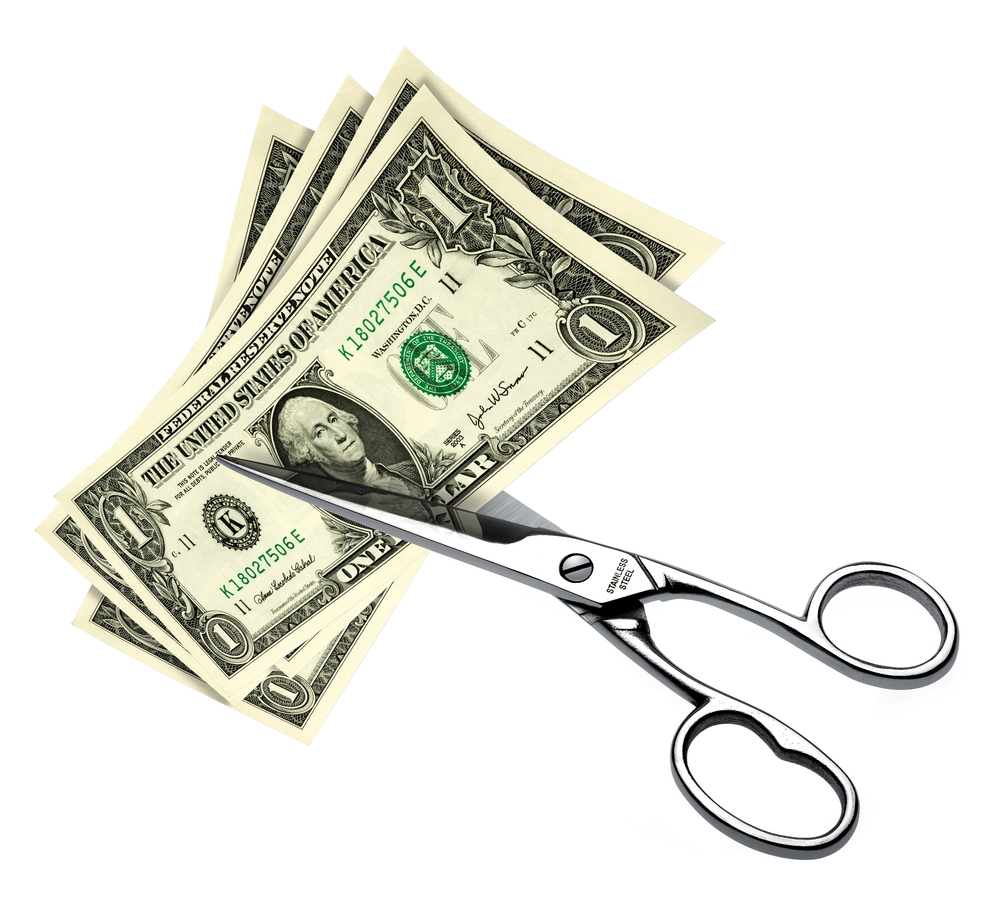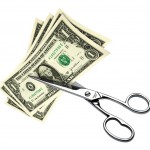13 Jun 2013
Why Do You Need a Business Coach?
 Do you aspire to be a great leader and grow your business profitably this year? Then it’s time to find the right business coach who can inspire and empower you to step up and reach your goals.
Do you aspire to be a great leader and grow your business profitably this year? Then it’s time to find the right business coach who can inspire and empower you to step up and reach your goals.
Almost every business is under pressure right now to attract more leads and close more sales in this tough economic environment where global competition is increasing every day for your potential audience. It is hard enough to keep up with the changes in your industry and the barrage of ads that target your potential customers – not to mention the innovation in technology, increasing complexity of running your business and complying with the tax legislation, HR issues, operational challenges and business planning. Having a Business Coach isn’t a luxury in this day and age, it is a necessity that you need in order to survive and thrive.
By far, one of the biggest assets that you will gain as a result of working with a business coach is accountability. Remember, it’s difficult to get a truly objective perspective or opinion from yourself, your spouse or your team members, but your business coach is there to be your “unreasonable friend” – to tell you the truth, challenge your assumptions, push your boundaries and motivate you to take action (especially when you are procrastinating).
A Business Coach or mentor will teach you “how to fish” rather than simply putting a fish in your hands when you need it. With years of successful experience (running their own business and helping hundreds of other entrepreneurs just like you), your business coach will help you develop and achieve your goals, put a solid business plan in place, execute effective strategies that will grow your bottom line, track and measure your progress and highlight blind spots or opportunities that you have overlooked.
You may be able to scrape by without the help of a business coach, but it’s almost impossible to consistently grow your business profitably without the training, guidance and focus you will achieve by working with a good business coach.
Find out more today by contacting us to speak to a business coach that can help you breakthrough your perceived limitations, make better decisions, step up as a leader and achieve your goals.
And remember, most importantly a business coach will:
- help you focus and eliminate all tasks that are taking up resources but adding value
- challenge assumptions and perceived limitations about your business and industry
- motivate you to ask better questions and make better decisions
- highlight opportunities or pitfalls that may not be obvious to you
- give you tips and proven strategies based on years of experience across many different industries
- be a valuable sounding board and provide a balanced, objective perspective
- help you develop and execute plans that grow the bottom line and cash flow safely & predictably
- track and measure your financial progress in a way that is meaningful to you
- assist with an exit strategy
- be your unreasonable friend with a wealth of experience across multiple disciplines – marketing, sales, training, systems, leadership, finance, legal issues and technology.
 All of the leading experts recommend that you spend 75% of your budget to retaining existing customers (and re-engage them). Yet surprisingly, most companies do the exact opposite. Even large corporations like Coles, Woolworths, Max Factor and Target (not just the little SMEs) make the mistake of spending too much chasing new customers (or ones that have left) and often ignore their existing ones.
All of the leading experts recommend that you spend 75% of your budget to retaining existing customers (and re-engage them). Yet surprisingly, most companies do the exact opposite. Even large corporations like Coles, Woolworths, Max Factor and Target (not just the little SMEs) make the mistake of spending too much chasing new customers (or ones that have left) and often ignore their existing ones.
Several years ago I held a senior commercial role at one of the largest retail businesses in the country and I can confirm that they spent <20% to retain existing customers. They, like 95% of businesses out there, spend the bulk of their budget on chasing new customers or attempting to re-engage those that have left and gone to the competition.
And therein lies the biggest mistake you can make as a business owner…
Every dollar spent on direct marketing to retain existing customers is actually worth 50x the equivalent amount spent chasing new customers. With above the line advertising, it is very hard to capture the attention of new customers, embed your message in their mind and compel them to act. It is much easier (and cheaper) to reinforce your message with an existing customer and encourage repeat visits.
So, if everyone knows it is easier and cheaper, why are most businesses NOT focusing the majority of their attention and budget on their existing customer base? The answer to that question is unclear. But what is clear is that there are 4 Simple Strategies that you can use today to boost sales and retain existing customers.
1. Spend 75% of Your Budget on Existing Customers – The bulk of sales and marketing efforts should be focused on direct communications and NOT on social media, newspapers, PR, magazines or pay-per-click advertising. For those of you who are established and have been in business for a few years, this is going to free up a lot of time that has been wasted on chasing new customers.
2. Do Your Homework to Maximize Return on Investment (ROI) – I recommend that you take the time today to analyse your existing customer data:
– What are they buying?
– What could you introduce them to which would increase gross profit margin?
– How can you drive frequency (visits)?
3. Frequency Lifts Sales by 75% More Than Upselling – It is much more effective and profitable, to focus on getting customers to return to your website or business, as opposed to trying to sell them one more thing while they are there.
4. Focus on Customers Within a 10km radius – Customers who have moved outside a 10km radius of your business can be particularly tricky to re-engage. In research conducted at one of the largest retailers in the country, we discovered that 82% of the revenues were attributable to customers that lived within a 10km radius. And in my experience working with hundreds of small-midsized businesses, this statistic still holds true. If your customer has moved outside of this radius, it does not make sense to waste any of your budget trying to reactivate them.
Even though it’s important to appeal to and attract new customers, it’s absolutely crucial to your business’s survival that you retain and nurture the customers that have supported and shopped with you to date. Everyone knows that is cheaper and easier to garner incremental business from existing customers but what separates the truly successful entrepreneur from the pack is the ability to put this knowledge into practice by allocating a large portion of your budget and focus to existing customers.
 “I’m your biggest fan, I’ll follow you until you love me
“I’m your biggest fan, I’ll follow you until you love me
Papa, paparazzi
Baby, there’s no other superstar, you know that I’ll be
Your papa, paparazzi”
In today’s challenging business environment, customers demand more from the products and services they buy—they want what they want, when and how they want it. And if they do not get it from you, they can and will obtain it from one of your competitors. Therefore, creating raving fans—customers who love what you do and are willing to follow, listen and respond to your call(s) to action —can give you a significant strategic advantage and improve your bottom line.
Now some of you may be wondering “what does Lady GaGa have to do with best business and branding tactics?” She’s never attended business school nor does she have a history of entrepreneurship. While it is easy to question her outlandish costumes, her repetitive child-like lyrics, and her over-the-top media stunts, it is hard to ignore her obvious musical talent and her ability to be at the right place at the right time with the right tune. Whether you love or hate her (and 99% of you are definitely in one camp or another), it is difficult to ignore the tremendous achievements (and raving fans) of this branding genius.
Less than a few years ago, she was virtually unknown – and today she has two platinum selling albums and is the envy of artists that have been in the business for decades.
How did she do it?
Think about it… in an industry cluttered with talented artists and interesting material, somehow SHE has managed to rise above almost everyone else and command our undivided attention. From her meteoric rise, we can glean 7 simple, yet powerful secrets that any business can use to create raving fans and dominate their market niche.
Secret # 1: Be Memorable
Every newspaper, radio station and TV program in the world reported and talked about the “meat dress” that Lady GaGa wore to the 2010 MTV Music awards.
To be frank, it was so bizarre and scandalous, you could not help but notice her.
Similarly, in business, it’s all about grabbing attention – about creating anticipation, capturing awareness and making customers notice your products and services. The aim is to inspire customers and potential clients stop in their tracks and pay attention to your offer, service, product, or information. In order to achieve this, you need to ask yourself what it is [exactly] about your offering (tangible or intangible) that will capture attention?
If you’re not truly memorable in business, it means you will have to work harder to get the sale. And every time you have to work harder, it costs you time and money.
Case in point – does anybody even remember (or care) what Myley Cyrus or Britney Spears wore to the MTV awards?
No. That is exactly my point – the # 1 secret to creating raving fans is to be memorable.
Secret # 2: Repeat Repeat Repeat
Lady Gaga has got some really interesting songs but when you actually look at the lyrics — they are incredibly child-like and simple. In fact, she often repeats the same words or sounds over and over again.
“Rah, rah, ah, ah, ah
Roma, roma, ma
Gaga, ooh la la
Want your bad romance
I want your ugly, I want your disease
I want your everything as long as it’s free
I want your love
Love, love, love, I want your love”
Ok Gaga, we get it already, you want our love. And love [to her] likely means HUGE album sales or — money, money, money! After all, didn’t ABBA teach us in the 80’s that it’s a rich man’s world?
So we all know that repetition works in music but why is it so powerful in business?
Each and every day, your target audience would be bombarded with hundreds of thousands of marketing messages. In order to create cut through and present a clear and coherent brand message, your message has to be the same every single time someone experiences it. To be effective, you cannot afford to be all things to all people. In this case, you actually want to be a broken record – “ tell them what you are going to tell them; then, tell it them, and finally tell them what you have told them.”
Once you have determined what your unique message is, the key is to repeat it over and over and over again – in your telephone greeting, brochures, business cards, website, Twitter account, Facebook page, Linkedin profile, press releases, thank you cards, customer feedback surveys etc.
Rarely will a customer act on your message the first time he/she sees it. If you want to earn their love, their business and create raving fans, you need to ask over and over again.
Secret # 3: Cultivate Excellence
If what you do is “just ok”, you might as well forget about being truly successful. Technical competence is the cornerstone of every thriving business.
Even Lady GaGa – as strange as she may seem – is a technical genius in her area. At the age of 4 she learned to play the piano by ear. By age 14, she’d written her first ballad and played at open mike nights in various New York clubs. At the age 20 (long before her own debut album was released) she had already written songs for many other well known artists.
Think about the most successful businesses and brand names in the World – Apple, Microsoft, Toyota, Proctor and Gamble, GE and 3M – they ALL place a huge emphasis on technical expertise and acumen. When what you do is superior to your competitors in terms of quality, service, aesthetics and durability, customers and raving fans will flock to your business and price will not be the determining factor in their decision to purchase from you.
Secret # 4: Encourage Fanatics
Lady GaGa initially focused on and won over the gay community and turned them into brand evangelists. Her music has now gained mass appeal with people of all ages and all walks of like.
Her strategy mirrored that of another well known brand icon that most people are very familiar with – Apple. If you think back a few years, Apple was very specific about who they were targeting – graphic designers, technical specialists, the music industry etc. Few people outside this narrow scope even considered owning one because it was thought to be more difficult than a PC to operate (for the average person). Now with the domination of other Apple products like the iPhone, iTunes, iPad and the iPod, almost every one of us has bought or used something that Apple produces.
If you want your business to be successful and endure the test of time, you will need to choose your demographic wisely and cultivate their fanaticism vigilantly.
Secret # 5: Focus
Are you clear about HOW your product/service makes life better for your customer?
It’s not enough to focus on being the #1 provider of this or that or the largest producer of X or Y. Success is less about size and more about companies who put the needs of their customers first. Focus first on what you can be best in the world at doing and then second on how you can deliver that world class product or service to your clients. There’s no point being bigger if what you do just isn’t that great in the first place.
As strange and outlandish as Lady GaGa is, it’s pretty clear what her focus is – delivering catching dance tunes and simple, memorable melodies. There is no tricky math here – she’s not trying to deliver deeply profound political statements or become the world’s most prolific artist. She’s just trying to do one thing – to be memorable and infectious — and she does that one thing very well.
Secret # 6: Package wisely
I have no idea how much time and effort would be spent producing the tracks that Lady GaGa releases but I would hazard a guess that almost as much is invested in developing her elaborate costumes. We all know that in life, “size matters”: In business, “packaging matters”. In fact some brands have such distinctive packaging, that they have changed the way that the entire industry displays its wares.
Think about how McDonald’s switched from Styrofoam boxes to plain wrap paper back in the early 90’s and the rest of the industry followed suit. What about the clean, vivid, minimalistic and colourful packaging of Apple? Haven’t many electronics competitors tried to mimic that highly compelling look and feel?
When is the last time that you took a step back and really looked at your packaging? Does it present your goods and services in the best light possible? If you changed its fit, shape, size, colour, directness or ease of use, could it make it easier for your customers and lift sales?
Secret # 7: Be Relentless
There are very few one-hit wonders in the music industry.
However, the world is littered with businesses that have had initial success with a product/service and then failed to do much of anything else. The advent of the internet and global trading has meant that competition is fierce in most industries and the market is inundated with new products and innovations. In order to be successful, businesses must constantly improve what they do and move forward, not only to thrive, but also to survive. To do this, you need to constantly ask yourself “what do we need to do today in order to WOW our customers and maintain their loyalty?” You need to create raving fans.
Lady GaGa does continuous improvement better than anyone. Just when one of her hits starts to taper off, she is quick to introduce us to another song that we just can’t seem to get out of our heads. In order to keep her name and brand on our minds, she carefully and consistently plans to release a new song every three to four months.
Let’s be frank, I doubt Lady Gaga will ever be invited to lecture at an Ivy League school on business success but these 7 secrets – that she does better than almost anyone else – apply to any and all businesses looking to create raving fans and be successful in today’s highly challenging and demanding marketplace.
 It is critical, particularly during challenging economic times, that business owners recognize their employees for all their hard work. If you can reaffirm and re-enforce your team members’ value and contribution while your organization is coping with the global downturn, you stand a better chance of retaining your best people when the economy turns around and opportunities to leave become plentiful.
It is critical, particularly during challenging economic times, that business owners recognize their employees for all their hard work. If you can reaffirm and re-enforce your team members’ value and contribution while your organization is coping with the global downturn, you stand a better chance of retaining your best people when the economy turns around and opportunities to leave become plentiful.
When we think of employee recognition, most may think of praise and financial rewards. However, it will require a holistic and integrated approach to ensure that members of your team know their importance to your continued success. Nearly everything we do as business owners in the workplace either contributes to or takes away from how recognized and appreciated our employees feel. If you, as the owner and leader of the organization, go into work feeling and acting as if you are a victim of the down economy, your team will follow your lead and adopt a helpless attitude and blame external factors for lack of growth and sales.
Employee recognition can be used strategically by employers to reward good behaviour and keep team members “present” and accountable for favourable results. It builds and reinforces the belief that they work for a company that cares and it reminds them to look for solutions (as opposed to focusing on problems or what is not working in the business).
But all employee recognition is not created equal. Almost all businesses use varying combinations of intrinsic recognition – health-care benefits, flexible work hours, time-in-lieu for volunteer activities, training opportunities and annual awards.
But recent studies (surveying thousands of workers across Australia) have clearly shown that the cornerstone of meaningful employee recognition is actually “opportunity”. An award may be a tangible, formal sign of recognition, but employees view opportunity as the primary indicator that their manager values them.
Opportunities don’t have to be expensive to be effective. You can provide the chance for a team member to better themselves by doing something as simple as trusting them with VIP customers or introducing them to a key figure inside or outside of the organization. It’s also been proven that employees find recognition more inherently valuable when it’s administered individually (i.e. in private) rather than in public.
The business owner or manager is the essential component when it comes to effectively recognizing valuable team members. Companies should employ the 80-20 rule-keeping in mind that team members respond best to a blend of diverse mix of employee recognition. Only a small percentage (20%) of an employee’s overall recognition can come from peers and financial means before it loses its effect. The remaining 80% should come from the business (i.e. intrinsic recognition) and direct praise must always come from the manager, and be delivered in private, in order to maximize the impact.
When you consider it from the perspective of the employee, it makes perfect sense. The manager or business owner ultimately decides who gets hired, who gets fired and who gets promoted. Timely approval and recognition from the owner or manager is the best way for an employee to judge his/her progress and stay accountable by focusing on targets and solutions. Opportunity is in fact the #1 motivator – and it often won’t cost the business a cent, which is great news in challenging times like these.
John Wannamaker may not be a household name but he opened the first department store in Philadelphia in the late 1800’s and is believed to be the inventor of the price tag and the seasonal sale. He was the first retailer to place a half-page newspaper ad, and also the first full-page ad five years later. He is widely considered to be one of the fore-fathers of advertising and credited with the famous phrase: “Half the money I spend on advertising is wasted; the trouble is, I don’t know which half.”
His words survive as one of the most frequently quoted clichés in marketing and advertising, even after radio, TV and now the internet, have replaced the dominance of print advertising.
Why with all we’ve accomplished in the last one hundred and twenty years, is this quote still relevant and significant to you (and to all marketers) today?
In fact how do you know you’re not throwing away 2/3 of your advertising budget? Or perhaps even as much as 3/4?
How can you be sure that your next campaign, sitting on your desk waiting for your approval, won’t be an abysmal failure – sucking your bank account dry and producing no measurable influx of qualified leads and sales?
Do you know with certainty which half of your advertising budget is wasted? Want if you needed to find out?
Right now, your audience is getting harder to reach in all the traditional media channels, and the rules of marketing have changed. Print newspaper readership, radio listeners and even TV viewers are down. Consumers have adapted to new technologies – the internet, iTunes, podcasts, downloads – and can now comfortably avoid unwanted advertising in many of these old channels.
Many of the old ways are being replaced by new ones. The internet, content marketing, video and social media have emerged as the new, dominant players. To succeed in this new realm of advertising, requires a shift in both mindset and strategy.
You used to be able to get away with talking at your prospects (or having one-way conversations), now you must respond to their comments (positive and negative) in real time.
Where five years ago you could simply focus on spending less to find more local prospects, now you must excel at “being found” in a sea of global competitors.
Thankfully, these new mediums bring with them two significant benefits – targeting and measurability. Finally, improving your odds of determining which half of your advertising budget is wasted, is not only possible, but refreshingly do-able. You simply have to know which tips and tools to use to maximize your return on investment (ROI).
Here are five practical tips for developing an effective measurement strategy for your online and offline marketing communications – (and for determining which half of your advertising budget is wasted):
1) Monitor all incoming leads
Where possible, place a unique phone number (or email address) in different media placements to gauge which ad creative, copy, design elements or physical placement garners the most qualified traffic and sales. Each unique number or email address can easily be re-routed to your primary incoming line or email, so you can streamline the process of receiving and replying to these valuable enquiries. To minimize confusion with your target audience, try to refrain from using too many different numbers at once.
For some brands, that are highly identifiable and use a memorable phone number, tracking may not be viable. As an alternative, try recording the inbound calls and use the insights to train your sales team. While it may cost more, the recorded conversations will provide significant insight into the interest level, FAQ’s, objections and pain/issues of your prospects.
2) Use Split Testing
When you see a banner, video, text or display ad online, it has been sent to your computer or mobile device from an ad server. In most cases, what this means is that the advertiser will have been given the opportunity to split test their ads – to change their online creative in real time to monitor impressions, clicks, engagement and conversions. Essentially some of the audience will see one version of the ad, while others may see different versions.
But split testing doesn’t just apply to online ads and websites. In fact it can be used effectively with any online or offline marketing piece to test different creative, copy, or calls to action. It allows your audience to tell you in tangible terms which messages they prefer and are inclined to respond to favourably.
3) Set Up Specific Landing Pages
Most small business owners will make the mistake of wasting a lot of money on ads to send traffic direct to their homepage. More often than not, 90% of this traffic will bounce off your website within seconds because the content they are interested in is either not featured prominently on the homepage or is just too hard to find. In order to maximize the engagement of your traffic and your ROI, you need to ensure that you are taking your leads to pages where the specific content and offer you are advertising is the ONLY information presented.
The easiest way to do this is to set up landing (or private) pages on your site with unique URLs for each offer. The landing page will give each user a more customized experience and it will allow you to set the stage for an inquiry, call to action or sale.
These landing pages are also extremely effective for allowing you to track and measure ROI from both online and offline ads – when a prospect converts, you can directly attribute that conversion to a specific marketing piece because the landing page URL is unique for each one. Where possible, remember to use a user-friendly URL (one that is short, relevant and easy to remember) to drive traffic from offline media – it will boost retention, recall and action by up to ten times.
4) Google Analytics
Google Analytics is an invaluable tool that can help you measure what is working and what isn’t on your website. However, just like the human brain, most site owners haven’t fully tapped into the full potential and power of it. In addition to telling you where your traffic is coming from and which search terms or links were used to find you, Google Analytics also measures where users click most on a given page, how long they spent on your site and where they go when they navigate away from your page. Google analytics can provide you with enough data to isolate and eliminate marketing that’s not generating profitable growth.
Research indicates that the average conversion rate for a website is between 2.2 – 4%. What this means is that 96-97.8% of the visitors that came to your site today, left without taking any action. They key to minimizing the leakage and maximizing the percentage that remember your message and take action lies in analysing the data that Google can provide on your website traffic and trends. It doesn’t make sense to spend more money on marketing if a large percentage of your audience is choosing not to take action.
5) Stop Chasing Clicks and Eyeballs
A click (or eyeball viewing your offline ad) means nothing to your business. It earns no revenue and creates no brand equity. Your advertising has to have a tangible end goal – and it shouldn’t be to reach the most eyeballs or generate lots of clicks. To have a successful business, you need people to discover how you can cure their pain, seek more information, join your list, or purchase your product/service. Success lies not in how many people know what you do but rather in how many you are able to connect with and inspire to say “yes” to your product/service.














